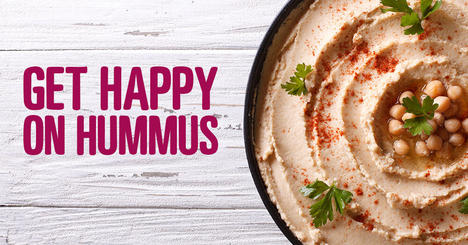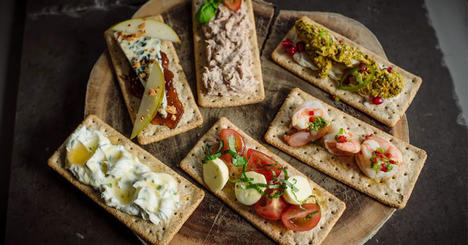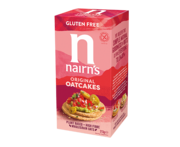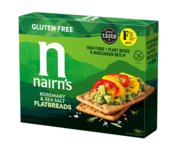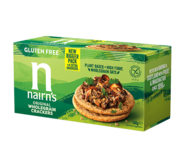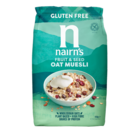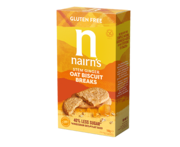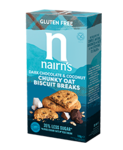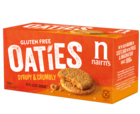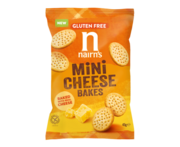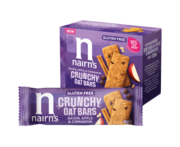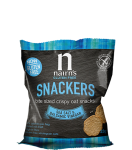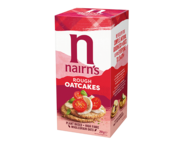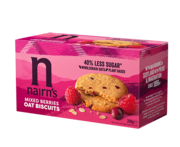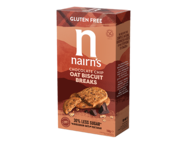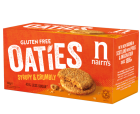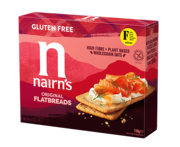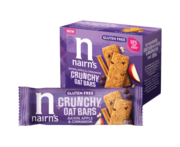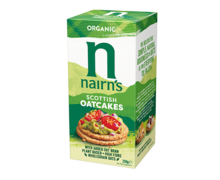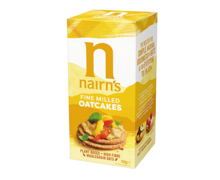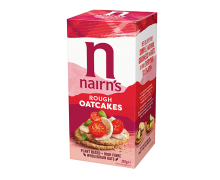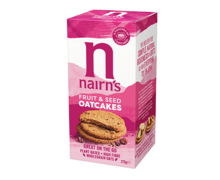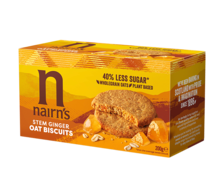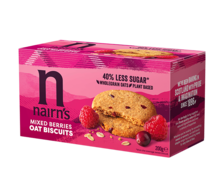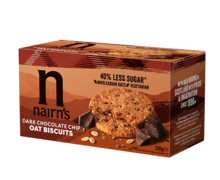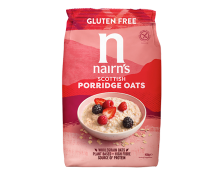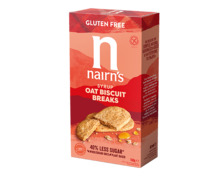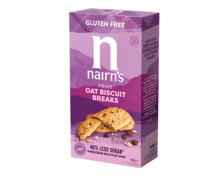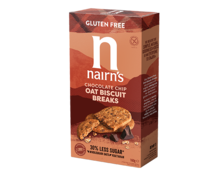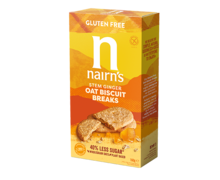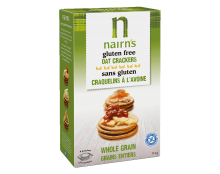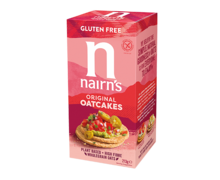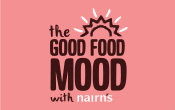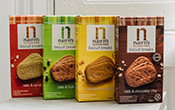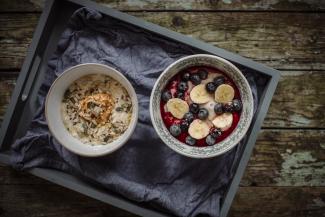
September is upon us and so is the Scottish Food & Drink Fortnight, taking place from the 1-16th September to celebrate all things to do with Scottish cuisine. From traditional Scottish food to contemporary Scottish recipes and snacks, the festival is here to encourage people to buy, eat and promote Scottish foodstuffs. The theme for this year is ‘the future of Scotland’s food and drink industry’, with a particular emphasis on the role of the nation’s youth in recognition of 2018 as ‘the year of young people.’
Thanks to an abundance of clean and natural resources, Scotland is the ‘envy of world’ for its high-quality produce. From salmon and seafood, to haggis with neeps and tatties, Scotland has made a name for itself on the global food stage.
And, of course, we can’t forget about the oats! Oats have long been the staple grain of Scotland and constitute as the main ingredient in a number of iconic dishes, including oatcakes, bannocks, and porridge! That’s why we at Nairn’s have decided to help you get involved in the festivities this year, with a list of delicious oat-based Scottish recipes and snacks for you to sink your teeth into.
Remember - it’s all about Scottish produce, so make sure you buy ingredients from local sources as much as you can. Grab yourself a bag of our Gluten Free Porridge Oats, and let’s get started!
Haggis with neeps (turnips or swedes) and tatties (potatoes) is by far the dish most commonly associated with Scotland. Although traditionally made from sheep’s heart, liver, and lungs, you don’t have to be a meat lover to enjoy this Scottish staple. There are plenty of recipes available for vegetarian haggis, using oats as the main ingredient to create a delicious and meat-free alternative. Here is one of our favourites!
Ingredients
- 50g Nairn’s Gluten Free Porridge Oats
- 300g tinned borlotti beans, rinsed and roughly chopped
- 30g butter
- 5 shallots, roughly chopped
- 2 garlic cloves, peeled and crushed
- 80g shiitake mushrooms
- ¼ teaspoon ground cinnamon
- 2 pinches nutmeg
- ¼ teaspoon black pepper
- ¼ teaspoon allspice powder
- 3 carrots, peeled and grated
- 80g lentils
- 1 lemon, juice and zest
- 500ml vegetable stock
- 2 tablespoons rosemary, finely chopped
- 1 tablespoon dried sage
- 2 egg yolks
- 1 savoy cabbage
- 2 pinches salt
Method
To get started, place a medium-sized pan on a low to medium heat and add the butter to melt. Add the shallots and garlic and cook until they are soft but not coloured.
Next, add the mushrooms, cinnamon, nutmeg, black pepper and allspice, and cook for 2 to 3 minutes.
Mix in the carrots, lentils and lemon zest, pouring in enough of the vegetable stock to cover the ingredients. Cover the pan with a lid and allow it simmer for approximately 15 minutes, or until the lentils are soft.
Use a blender to pulse the porridge oats until they resemble breadcrumbs, then add them to the pan to absorb the rest of the vegetable stock. Turn down the heat to low and cook the ingredients through for 2-3 minutes, stirring continuously.
Now it’s time to add the lemon juice, beans, herbs and seasoning, with a pinch of salt to your taste. Remove the pan from the heat and leave it to cool slightly, before adding the 2 egg yolks and mixing to combine.
Cut out the core of the cabbage to release the outer leaves, discarding the first and removing the next eight. Add them to a pot of salted boiling water for 4 minutes, before removing and refreshing in a bowl of cold water for 5 minutes.
Then, pat the leaves dry and use a small knife to trim any thick veins, making them flat, whilst ensuring you’re keeping the leaves in 1 piece.
Sandwich the leaves between 2 clean tea towels and use a rolling pin to press them flat, as if you were rolling pastry.
Lie a sheet of cling film on a surface and place 1 leaf on top. Add 2 heaped tablespoons of the haggis mix onto the leaf. Next, roll the cabbage shut to enclose the mix, folding in the sides and rolling it forward to make a parcel.
Wrap it tightly in the clingfilm to hold the shape and seal each end. Repeat this for each of the cabbage leaves and poach them in simmering water for 30 minutes.
When they’re done, remove the parcels from the water and allow them to cool slightly. Cut one end of the cling film to release each haggis and serve immediately with mashed neeps, tatties and vegetarian gravy.
Scottish Salmon & Cream Cheese Appetisers
As Scotland’s largest food export, Scottish salmon has well and truly conquered the world. Renowned for its freshness and quality of flavour, it has even earned the prestigious Label Rouge designation in France and is the first non-French food to do so.
There are plenty of creative ways to incorporate salmon into your meal plan. Our pick is these Scottish salmon and cream cheese appetiser bites, perfect for serving at parties or for lunchtime nibbles. These appetisers represent a blend of Scottish-sourced products, including Nairn’s Oatcakes or Nairn’s Gluten Free Flatbreads depending on your preference.
Ingredients
- Nairn’s Oatcakes (gluten free oatcakes available) or Nairn’s Gluten Free Flatbreads
- 225g cream cheese, room temperature
- 170g (½ cup) sour cream
- 2 tablespoons lemon juice
- 1 tablespoon juice from a jar of capers
- 115g Scottish smoked salmon, cut into cracker sized pieces
- 1 tablespoon dill, chopped
Method
This one is as simple as it gets. First, combine the cream cheese, sour cream, lemon juice and caper juice in a mixing bowl until the ingredients are thoroughly blended.
Top each cracker with the mixture, adding the smoked salmon slices and a sprinkling of dill on top.
Voila! Your Scottish appetisers are ready to serve.
Once known as ‘the backbone of many a-sturdy Scotsman’, porridge (or oatmeal) has long played an important role in Scottish food heritage. It once served as the main source of sustenance for Scottish farmers and labourers in need of an inexpensive and filling meal.
Traditionally, it was cooked in a heavy saucepan with water and salt, and stirred with a stick-like wooden cooking tool known as a spurtle. Once cooked, it could be stored in a ‘porridge drawer’ and eaten cold for several days, before drying out and being cut into oatcakes.
Porridge these days bears little resemblance to its traditional counterpart, with people favouring a creamier texture and flavourful toppings. Still, if you’re looking for an authentic Scottish porridge experience, then follow the recipe below.
Ingredients
- 100g Nairn’s Gluten Free Porridge Oats
- 1 ½ pints water (milk or a half-half milk and water mix can also be used)
- Pinch of salt
Method
First of all, pour your water/milk into a heavy-bottomed pan and set it on a high heat. Bring it to a boil before reducing the heat to medium.
Next, sprinkle your porridge oats on top and stir them into the milk/water using a wooden spoon (or spurtle if you have one!). Bring the ingredients back to a boil, stirring continuously to avoid forming lumps.
Reduce the mix back to a low heat, covering the pan with a lid and leaving it to simmer for approximately 20 to 30 minutes. Add a pinch of salt to your taste about half-way through.
Make sure you thoroughly stir the porridge every few minutes to stop it sticking to the pan.
The cooking time may vary depending on the desired ‘thickness’ of your porridge. The longer you leave it on heat, the thicker it will be, but make sure you don’t overdo it and make it too stodgy.
When it’s done, pour the porridge into a bowl and top it off with cold milk or cream, and a sprinkle of sugar. Why not add a selection of Scottish sourced fruits, such as strawberries and other berries, for a sweet finish?
Nothing says ‘Scotland’ quite like shortbread. Allegedly invented as far back as the 12th century, the first recipe for shortbread was printed by a Scotswoman named Mrs McLintock in 1736. It has since then become an established Scottish staple, particularly associated with Hogmanay and Christmas celebrations. Shortbread can come in many shapes and flavours, with some recipes even incorporating oats!
Ingredients
- 160g Nairn’s Gluten Free Porridge Oats
- 225g butter, softened
- 175g dark and soft sugar
- 125g plain flour
Method
First of all, mix together the butter and the soft dark sugar until they are combined into a smooth and creamy paste.
Next, stir in the flour and the oats, before chilling the mix in the refrigerator for approximately 2 hours.
Preheat your oven to 180°c (160 if using a fan assisted oven), or gas mark 4.
Remove the mix (which should now resemble a dough) from the refrigerator and roll it out on a lightly floured and sugared surface until it’s 5mm thick.
Use a pastry cutter or a sharp knife to cut out your shortbread shapes and lay them out on a baking tray making sure to leave a good space between each biscuit.
Now all you have to do is bake them and wait! Leave them in the oven for 8 to 10 minutes, or until the edges turn a nice golden-brown.
Oat Bannock Bread
A traditional staple of the Scottish diet, bannocks are a type of flat and usually unleavened quick bread best served in wedge-shaped slices and perfect for sharing. They were traditionally cooked using a griddle (or girdie in Scots), but we’ve provided you with a recipe adapted for the modern age.
Ingredients
- 125g Nairn’s Gluten Free Porridge Oats, with additional for kneading
- 2 tablespoons melted fat or butter
- Pinch of salt
- 2 Pinches bicarbonate of soda
- 3-4 tablespoons of hot water
Method
First of all, mix the dry ingredients (oats, salt, bicarbonate of soda) in a bowl until they are well distributed.
Next, pour the melted fat/butter and water into the centre of the bowl and stir well until the ingredients resemble a thick paste.
Cover a surface with a sprinkling of oats and tip out the mixture on top. Split it into two, roll one half into a ball, and knead with oatmeal on your hands to prevent sticking.
When done, roll the dough out until it is about a quarter of an inch thick, placing a plate on top and cutting around the edges for a nice, round shape.
Divide it into quarters and place the pieces in a greased and heated flat-bottomed pan. Cook for about 3 minutes until the edges curl slightly, before flipping it over and doing the same to the other side. Make sure to prepare another bannock for the pan while you are doing this.
Alternatively, you can bake the bannocks in an oven heated to 190°c (gas mark 5) for about 30 minutes, or until they are brown at the edges.
Enjoy the resulting bannocks as they are, or serve them with butter and jam over a cup of tea! They can also be used as a good alternative to bread for dipping in soups and stews.
And there you have it! You’re all set to enjoy Scottish Food & Drink Fortnight 2018 with a batch of delicious and traditional Scottish recipes. Make sure you stay up to date with the festivities by following #ScotFoodFort on social media, or by attending one of the hundreds of events taking place across the country!

